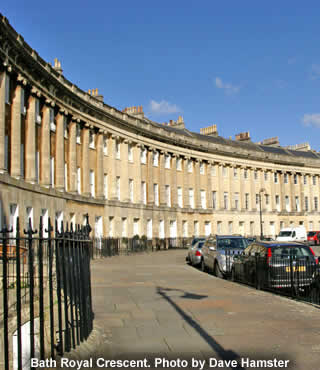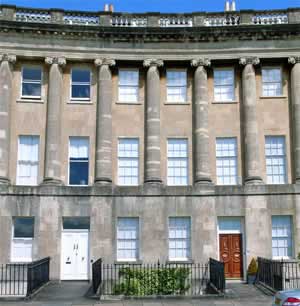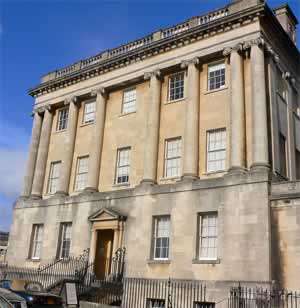Royal Crescent |
|
 |
|||
The city of Bath's architectural pride and joy |
||
Listen to this article |
||
In 1987, the city of Bath in its entirety was made into an official World Heritage Site. The reason for this is its collection of incredible architecture, which is extremely high in both quality and quantity. The first example that normally springs to mind is the city's namesake, the 2000-year-old Roman Bathhouse. However, in the 18th century, the Georgians gathered their tools and set about transforming the city. Their contribution was arguably more important that that of any other society. Without it, Bath would probably never have achieved the World Heritage status it bears so proudly today. |
||
The pinnacle of the Georgian achievements is undoubtedly the Royal Crescent. It was designed by a man called John Wood the Younger, in the mid-18th century. His father, John Wood the Elder, was another architect who'd worked extensively in the city. He'd produced countless streets, squares and parks in his trademark Palladian style. John Wood the Younger followed in his father's footsteps by imitating this technique, and it proved to be a roaring success. The Roman Baths may be older, and probably slightly more well-known, but nowhere else grabs the attention as firmly as the Royal Crescent. The structure consists of 30 terraced houses, arranged in a broad curve. They look stunning from just about any angle, and their photographs have becoming something of a calling card for the city as a whole. The terrace hasn't been altered since its construction, so it looks just as it ever did. |
||
 Houses in the Royal Crescent Photo stevecadman |
||
Over the years, the houses of the Royal Crescent have been occupied by some important and well-known people. One of the first was Prince Frederick, the second son of King George III. In his honour, the word "Royal" was added to the structure's title. Prior to this, it was simply known as "The Crescent". Later residents included explorers, military officers and professors. |
||
In the 1960s, the house at Number 1 was turned into a museum. The interior looks just as it would have done in the 18th century, so you can get a clear picture of Georgian life. In the dining room, dessert is about to be served. In the gentlemen's study, a game of cards is underway. It's so accurate that you half expect the residents to be back any moment. Even during the restoration work, the builders only used materials which would have been available in the 18th century. |
||
 No.1 Royal Crescent Photo heatheronhertravels |
||
Just next to the Royal Crescent is a similar construction called The Circus. Here, the houses are grouped into three separate curves, which together form a full circle. The project was a collaboration between both John Woods, the Elder and the Younger. The father was responsible for the design, but he died before it could be put into practice. It was left to the son to finish off the construction work. |
||
The Circus surely inspired John Wood the Younger's work on the Royal Crescent. Together, the two structures resemble the sun and moon. This is supposedly an example of Masonic or occult symbolism - a subject that both architects were heavily interested in. |
||
After the building was completed, it soon inspired similar work around the city. One of the best examples is Lansdown Crescent, just a few hundred metres to the north. This is a Grade I listed building, just like its parent structure. However, it doesn't come close to matching the scale and impact of Bath's pride and joy - The Royal Crescent. |
||
|
||
No.1 Royal Cresent is open to visitors Tuesday to Sunday, 10.30am to 5pm (4pm in winter). Entry costs around £6.50 for adults, £2.50 child. Tel: 01225 428126 |
||
|
Pocket Britain is optimised for use on a smartphone or tablet with internet access. All content is subject to copyright. All reasonable methods have been used to ensure information supplied is accurate at the time of publication. However, it is advisable to check information before relying on it. Privacy Policy |